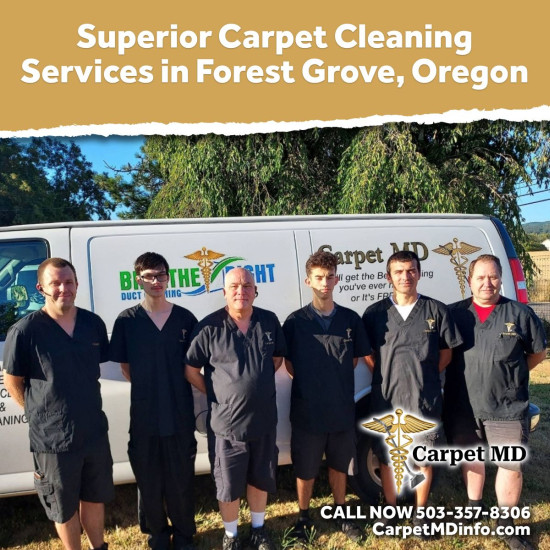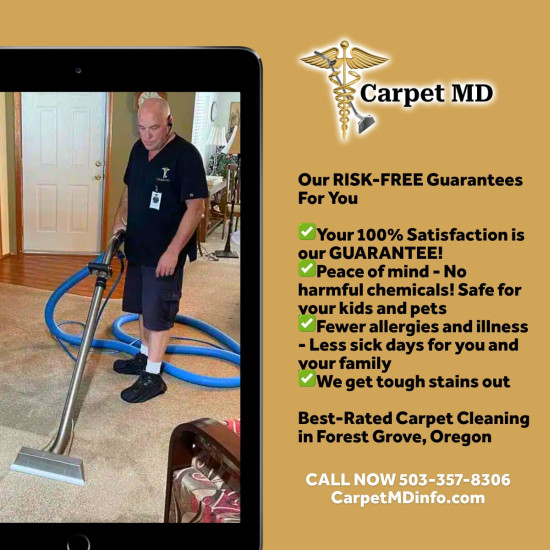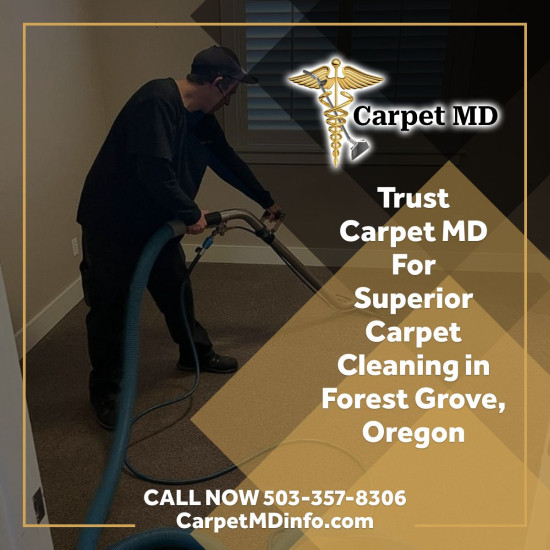The comforting, familiar feel of your favorite upholstered armchair or sofa can be deeply misleading. While the exterior might look clean, a quiet, insidious problem is often taking root: hidden moisture deep within the fabric and padding. This issue is not merely a cosmetic concern; it's a pervasive environmental trigger often misunderstood or completely overlooked by homeowners in the Forest Grove, OR area. Local humidity changes, accidental spills that don't seem to soak through, and even routine cleaning methods can leave residual moisture behind, creating a perfect, dark environment for microbial growth and fabric deterioration. This subtle issue often goes undetected until significant problems arise, forcing a more costly intervention.
“What many homeowners don’t realize is that their upholstered furniture acts like a sponge, drawing in and holding onto humidity and microscopic spills,” says Chris Sutton, Owner/Operator of Carpet MD in Forest Grove, OR. “That subtle, earthy smell is a critical sign, and by the time you notice it, the structural issue beneath the surface is already critical. You're dealing with a silent time bomb for your upholstery’s longevity and your home’s air quality.”

Understanding the Science Behind Hidden Moisture in Upholstery
The 'why it matters' of hidden moisture is rooted in basic microbiology and material science. Upholstery is a complex weave of fibers—both natural and synthetic—over layers of padding (often foam or down), all resting on a supportive frame. When moisture permeates this structure and is not quickly and thoroughly dried, a chain reaction of negative consequences is triggered.
The first and most critical consequence is the proliferation of mold and mildew. Mold spores are ubiquitous; they only need three things to thrive: a food source (the organic material in the fabric), a moderate temperature (room temperature is ideal), and moisture. Studies show that visible mold growth can begin in as little as 24 to 48 hours under optimal conditions. The porous nature of upholstery traps air, which further slows down evaporation. As the mold colonies grow, they release microscopic spores and mycotoxins into the indoor air.
This leads to the second major risk: compromised indoor air quality and significant health implications. Exposure to mold spores and mycotoxins can trigger or exacerbate allergies, asthma, and respiratory issues, particularly in children and the elderly. Placeholder statistics indicate that up to 40% of all allergic reactions in the home are linked to biological contaminants like mold and dust mites, which also thrive in moist conditions.
Financially, the cost of neglect is substantial. Prolonged moisture exposure leads to permanent fiber damage, color fading, and structural weakening of the foam padding, which can eventually disintegrate. Instead of an annual professional cleaning, homeowners are eventually forced to consider costly reupholstering, which can run into the thousands of dollars, or premature replacement of the furniture item entirely. Furthermore, the musty odor associated with microbial growth is difficult to eliminate completely without professional intervention because the source is deep in the padding. Ignoring the problem, therefore, shifts a minor maintenance issue into a major financial and health liability for the Forest Grove home.
Simple, Effective Steps to Prevent Hidden Moisture in Your Home
While the risks are serious, homeowners have several actionable, DIY-friendly steps they can take to mitigate the risk of hidden moisture accumulation in their favorite upholstered pieces. Proactive maintenance is the best defense against this subtle problem.
Immediate and Thorough Spot Cleaning: Never let a liquid spill sit. The moment a spill occurs, blot—don’t rub—the liquid using a clean, dry white cloth. After the initial blotting, use a very minimal amount of an approved, pH-neutral fabric cleaner only on the visible spot. The key is to use as little liquid as possible. Over-wetting the spot is a primary cause of deep moisture retention. Follow up with a dry cloth to wick away as much residual dampness as possible.
Optimize Indoor Humidity Levels: Humidity is a major contributor to general moisture accumulation. Maintain a relative indoor humidity level between 30% and 50%. During the more humid seasons common to the Forest Grove area, utilize a dehumidifier, especially in basement or ground-floor rooms where upholstered furniture is placed. Air conditioning also helps to dry the air and can significantly reduce the potential for moisture absorption by the furniture fibers.
Ensure Adequate Air Circulation: Upholstered furniture placed directly against a cold exterior wall is at the highest risk for condensation and trapped moisture. Pull furniture a few inches away from walls to allow air to circulate freely around the back and bottom. In damper rooms, occasionally use a ceiling fan or a portable fan directed towards the base of the furniture for several hours after heavy use or any cleaning to promote faster drying.
Strategic Sunlight Exposure (When Safe): Ultraviolet light from the sun is a natural disinfectant and helps wick away surface moisture. On sunny, low-humidity days, if your furniture is not made of highly sensitive fabrics prone to fading, consider strategically opening curtains to allow natural light to hit the upholstery. Do not leave sensitive items in direct sun for long periods, but a brief, controlled exposure can be highly beneficial for drying.
These steps, implemented consistently, can dramatically reduce the likelihood of moisture buildup. However, as Chris Sutton notes, a simple philosophy must guide your actions: “If you spill something, don’t just treat the surface; think about the padding underneath. Your goal should be to completely dry the deepest part of the fabric and foam. When in doubt, always err on the side of caution—drying is the single most important step.”
Knowing When to Call a Specialist
While DIY prevention and spot cleaning are essential, there are inherent limitations to consumer-grade solutions. Standard home carpet cleaners or consumer steam machines often lack the necessary extraction power to pull moisture out of dense upholstery foam and fabric layers effectively. This failure to fully extract cleaning solutions often exacerbates the problem, leaving behind a damp, soapy residue that attracts soil and promotes mold growth.
Moreover, identifying the early stages of moisture damage requires specialized equipment, such as moisture meters, which homeowners typically don't possess. When an odor persists, or if you suspect hidden damage, it’s time to call in the professionals. Companies like Carpet MD provide necessary, comprehensive Carpet Cleaning Service in the Forest Grove, OR area, utilizing professional-grade, high-powered, low-moisture extraction methods specifically designed to address and eliminate the root source of the problem, not just the surface stain.

Conclusion
The health and structural integrity of your home’s upholstery are worth more than a quick surface clean. By understanding the urgency of hidden moisture and adopting proactive maintenance habits, Forest Grove homeowners can protect their investment and improve their indoor environment. Chris Sutton and the team at Carpet MD are dedicated local experts, ready to assist the community in maintaining a clean, healthy, and long-lasting home environment. Don't wait for the odor—act today.




